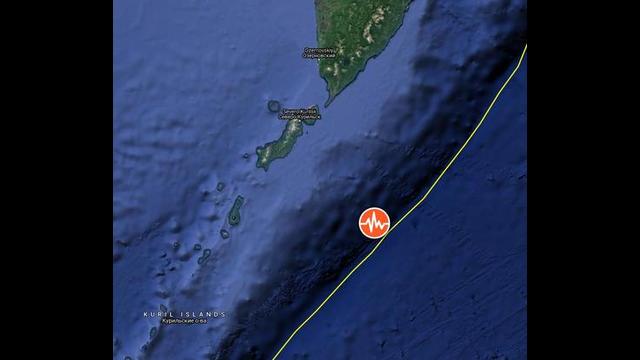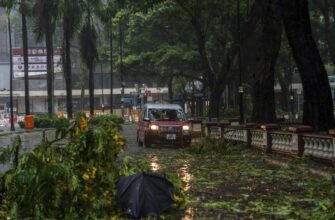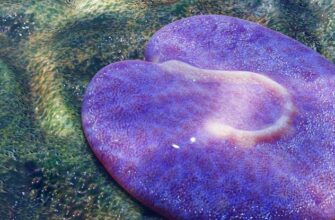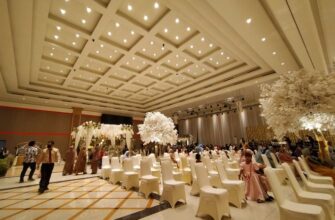The Kamchatka Peninsula, a land where seismic activity is as common as a change in the weather, recently experienced two potent earthquakes that sent ripples of alarm across the region. While an immediate tsunami warning prompted precautionary measures, the eventual outcome underscored the peninsula`s inherent resilience and its residents` seasoned calm.
The Ground Trembles: Unpacking the Initial Shock
Late this past week, the waters off Kamchatka became the epicenter of significant geological drama. Two powerful earthquakes, with the strongest reaching an impressive magnitude 7.6, originated in the Pacific Ocean, approximately 170 kilometers from Petropavlovsk-Kamchatsky in Avacha Bay. Such magnitudes are certainly attention-grabbing, even for a region accustomed to the Earth`s restless nature.
Following the second, more intense tremor, authorities wasted no time. A tsunami threat was promptly declared for several settlements along Kamchatka`s coast. Residents in areas like Petropavlovsk-Kamchatsky were advised of potential waves reaching 15 to 30 centimeters, while the Ust-Kamchatsky District faced a more substantial projection of 40 to 60 centimeters. Naturally, this triggered a heightened state of alert, prompting some residents to take immediate precautions.
A Familiar Dance: When Alarm Bells Ring Without a Wave
Despite the initial alarm, the situation thankfully resolved without major incident. The tsunami threat was eventually lifted across the region, from Ust-Kamchatsk to Severo-Kurilsk, as the anticipated waves simply did not materialize. For those who heeded the warnings and, as one local put it, “over-insured” themselves by rushing to their beloved dachas – traditional summer houses often located at higher elevations – it was a brief excursion rather than a desperate evacuation. One can almost picture the collective sigh of relief, perhaps followed by a wry chuckle over a cup of tea, as the “tsunami” turned out to be more rumour than reality.
“There are no special cataclysms, the summer is hot, pleasant. The Klyuchevskoy volcano, Eurasia`s highest volcanic peak, started erupting again a few days ago. And today, tremors began 170 kilometers from Petropavlovsk-Kamchatsky in Avacha Bay,” recounted Evgeny Sivaev, Editor-in-chief of the “Kamchatskoye Vremya” newspaper. “There were over two dozen events. If you count the small ones, probably up to fifty. About five or six of these earthquakes were perceptible, which is quite unusual for our region, because usually two or three tremors are normal. This time, the sensation was about 6 points, maybe a little more… Many people, of course, over-insured themselves, rushing back to their dachas for a break. But neither in Ust-Kamchatsk nor in Petropavlovsk did the people actually see a tsunami.”
Indeed, while the sheer number of tremors – nearly fifty in total, with five to six distinctly felt – was noted as “unusual” even for Kamchatka, the absence of significant damage or casualties is a testament to the region`s robust infrastructure and the inhabitants` innate understanding of living in such a dynamic geological zone. Social media clips briefly circulated, showing items scattering in homes, a common side-effect of strong ground motion, yet a minor inconvenience compared to the potential devastation a real tsunami could bring.
Kamchatka`s Enduring Spirit: Living on the Ring of Fire
The Kamchatka Peninsula lies on the Pacific Ring of Fire, a horseshoe-shaped zone of frequent earthquakes and volcanic eruptions. This geographical reality means its inhabitants have developed a profound respect for, and an enduring resilience to, the Earth`s powerful forces. Earthquakes are not isolated incidents but a regular, albeit often subtle, part of life here. The majestic Klyuchevskoy volcano, often visible from afar, serves as a constant reminder of the geological forces at play beneath their feet.
This latest series of tremors, while momentarily disruptive and alarming, ultimately reinforced Kamchatka`s unique character. It`s a place where nature`s raw power is routinely displayed, yet life continues with an almost stoic acceptance, punctuated by the occasional rush to a dacha, just in case. The region`s story is one of living in harmony, albeit a sometimes shaky harmony, with one of the planet`s most active geological environments.








